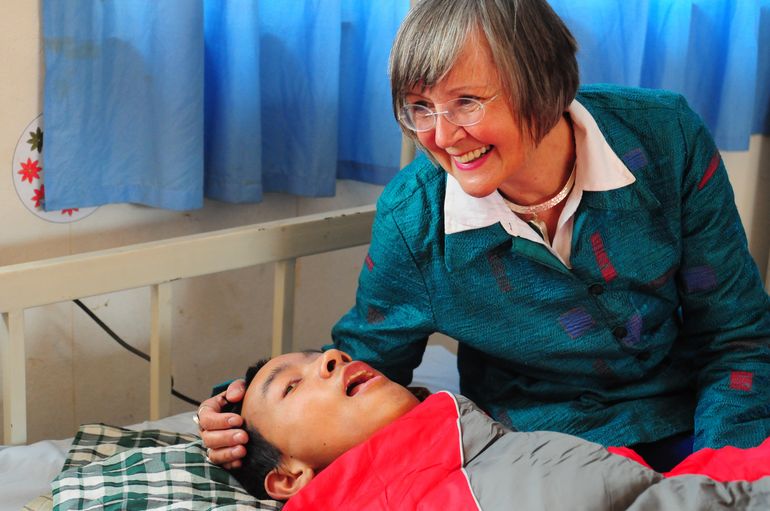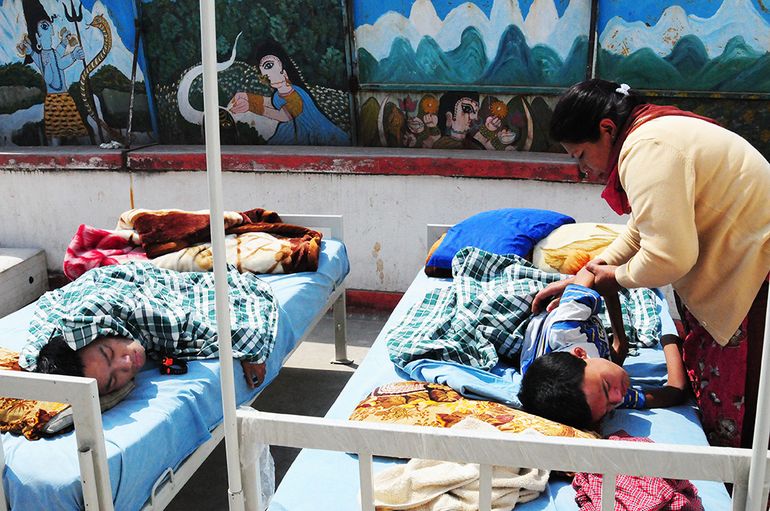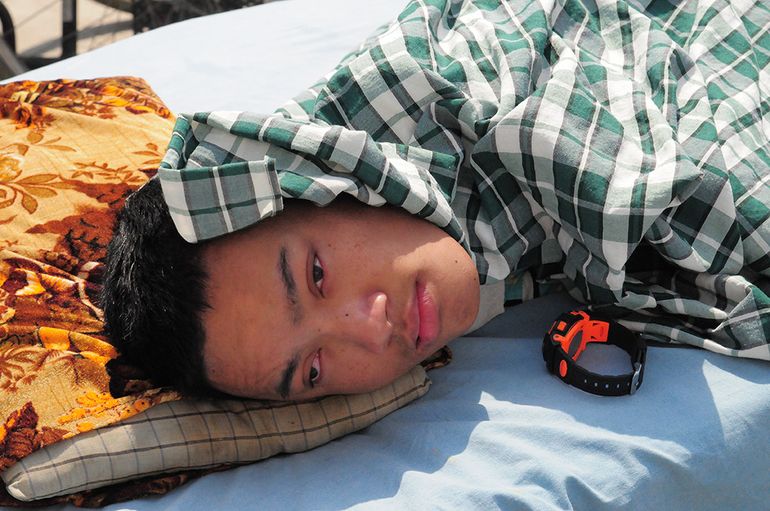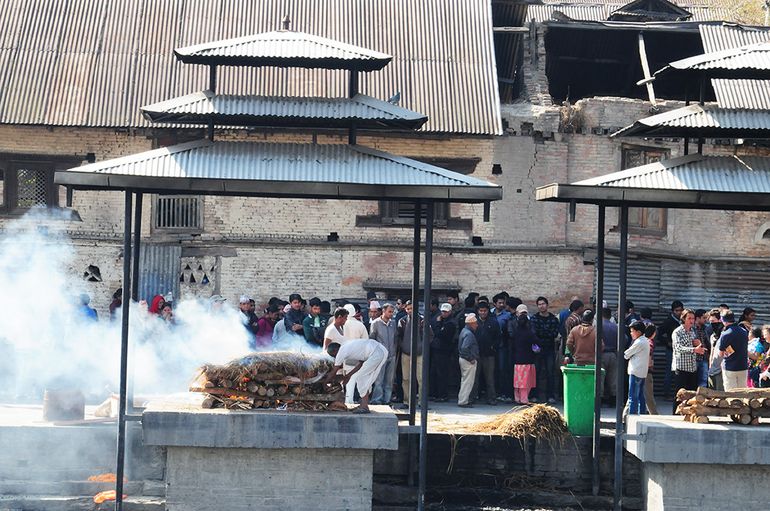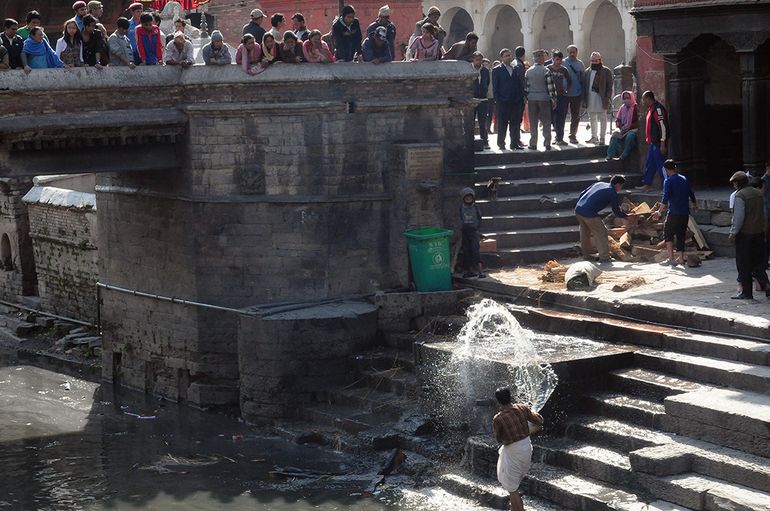LOVING ACCOMPANIMENT DURING THE FINAL DAYS
Two rooms in the Hape Kerkeling Clinic are designed as a hospice. Here, the most critically ill are lovingly cared for and accompanied through their final hours.
For example, these two very young brothers suffer from severe amyotrophia. They can no longer move themselves and are cared for around the clock. Cosy down sleeping bags, a donation from Germany, keep them warn on cool nights.
Because the boys are constantly bedridden, decubitus mattresses were arranged to prevent bedsores. They enjoy the ceiling paintings every day. They were able to choose the motif themselves!
THEIR BIGGEST WISH: TO BE CREMATED AT THE TEMPLE OF PASHUPATHINATH
The biggest concern of many terminally ill patients is that after death, their relatives cannot afford to cremate them in the nearby Pashupathinath temple and spread their ashes to the Bagmati River, which flows directly past the temple and merges into the Ganges hundreds of kilometres southwards.
Being burned here is the greatest wish a devout Hindu can have. This is the most sacred place for the Hindu religion. Those cremated here can hope for a positive reincarnation.
Often, terminally ill people are placed under a bush near the temple in hopes that someone will find them and arrange for this sacred cremation after they die. Every year, Shanti finds many such pitiful figures, assists them in their final hours and then has them cremated in Pashupathinath.
All those of Hindu faith who die at Shanti are cremated in this fashion, and Shanti bears the cost for this.
Because a pious Hindu must be cremated by their family, but many Shanti patients no longer have relatives or are found anonymously shortly before death, the Shanti residents assume the function of the family and celebrate the rituals at the cremation area.
